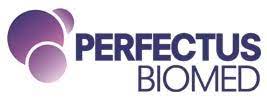Breaking biofilms – Translating biofilm research into new strategies to treat and prevent biofilm-associated infections

The enormous medical and environmental challenges that biofilms cause is widely discussed and researched. Over the last two decades the biofilm field has grown considerably1 and new therapeutics containing mechanisms that maintain and disrupt bacterial communities, particularly in the wound care and implantable space (stents, catheters), are entering the market, although progress is being made more is needed to tackle this developing global health threat.
Biofilms are a complex collective of microorganisms enclosed in a self-produced extracellular polymeric slime (EPS) matrix. Biofilm can adhere to foreign material, living surfaces or devitalized tissue, thus infections in patients with device implants, catheters, and heart valves are common. There are also observations of non-surface related infections such as chronic wounds, Cystic Fibrosis infections and bacterial ear infections. Biofilm is extremely hard to detect and eradicate and is often the cause of chronic disease. As the importance of infectious disease continues to increase, along with the growing problem of antimicrobial resistance (AMR), it is likely that innovative antimicrobials, including antibiofilm therapeutics, will gain popularity and marketability.2 New medical treatments looking to enter the commercial market must first navigate global regulatory submission compliance, and the requirements to make a claim that a product is “anti-biofilm”, differ depending on the regulatory bodies approval pathway.
The European Chemicals Agency (ECHA) published guidance in November 2022, in which there was a chapter on biofilms in the regulations on Disinfectants. The ECHA guidelines are used to provide further information on BPR in EU, and alongside the acknowledgement of biofilm in water systems and environmental conditions, acceptance criteria are outlined for clinical disinfectant products. The document acknowledges that this is an area in which science is developing rapidly, and that laboratory tests for evaluating the efficacy against biofilm disinfectants should emulate the critical factors of a real-world environment.3 This guidance is just one indicator that the regulatory tide is turning toward anti-biofilm claims.
The FDA has not yet outlined clear guidance on medical device testing as it relates to biofilm control, and approvals of anti-biofilm claims have been on a more case-by-case basis. The FDA is dedicated to addressing the challenges of AMR, and as more research is carried out to further understand the relationship between biofilms and antimicrobial resistance, it is anticipated that there will be further guidance from regulatory bodies such as the FDA.
The future for anti-biofilm therapeutics is promising. As more is understood within the wound care and medical device market, there is also a rise in pharmaceutical products that are targeting biofilm related infections (cystic fibrosis). Industry interest in anti-biofilm products is promising and indicates that there is a significant commercial market for these products.4 This industry interest is elicited, in part, from the healthcare professionals who are focused on spearheading patient care. Partnering with a CRO that was the first in the world to have biofilm test methods accredited to ISO 17025, has the expertise to customize test methods that assess products in real-world scenarios, and has experience testing anti-biofilm products that have been successfully brought to market, is essential to staying ahead of the anti-biofilm curve and capture market share opportunities.
Contact a member of our team today to find out how we can support your anti-biofilm product pathway – info@perfectusbiomed.com
1 - https://www.sciencedirect.com/science/article/pii/S2590207520300101 - page 1
2- https://www.sciencedirect.com/science/article/pii/S2590207520300101 - page 5
4 - https://www.sciencedirect.com/science/article/pii/S2590207520300101 - page 5





















